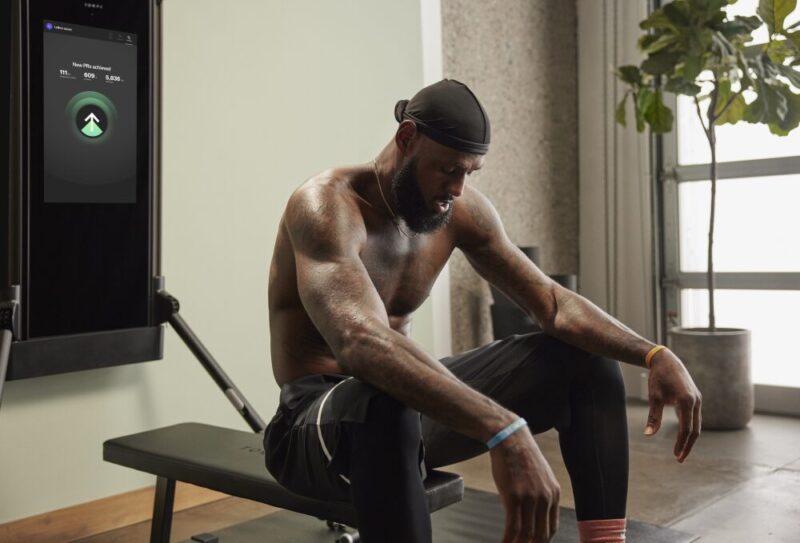Muscle recovery is an essential aspect of any athlete’s regimen, particularly for those at the professional level. It’s the key to maintaining performance, preventing injuries, and ensuring a long, healthy career in sports. LeBron James, one of the greatest basketball players of our time, exemplifies the pinnacle of pro-level recovery.
His methods and dedication to muscle recuperation have played a significant role in his longevity and success in the NBA. This post aims to delve into the various facets of muscle recovery, drawing inspiration from LeBron’s routine, and providing practical tips for athletes and fitness enthusiasts.
The Role of Recovery
The importance of muscle recovery in athletic performance cannot be overstated. It’s a critical component that aids in muscle repair, growth, and overall body rejuvenation. When athletes exert themselves, their muscles undergo stress and microscopic tears.
The recovery process allows these tears to heal, leading to muscle growth and increased strength. This cycle of stress and recovery is fundamental to improving athletic performance and this is where oxyhelp.com steps in. Without adequate recuperation, athletes risk overtraining, which can lead to injuries, fatigue, and a decline in performance.
Proper Nutrition
Nutrition is a cornerstone of effective muscle recovery. A balanced diet rich in proteins, carbohydrates, healthy fats, and essential nutrients plays a vital role in repairing and rebuilding muscle fibers. Proteins provide the amino acids necessary for muscle repair, while carbohydrates help replenish glycogen stores depleted during exercise.
Essential fatty acids, particularly omega-3s, can aid in reducing muscle soreness and inflammation. Athletes should also focus on micronutrients like vitamins and minerals, which play critical roles in muscle function and recovery. Hydration, too, is crucial; water is essential for various bodily functions, including nutrient transport and temperature regulation.
Quality Sleep

Sleep is perhaps the most underrated yet vital component of muscle recovery. It’s during deep sleep that the body undergoes most of its repair and recovery processes. Growth hormone, which plays a significant role in muscle repair and growth, is predominantly released during sleep.
Inadequate sleep can significantly hamper these recovery processes, leading to decreased performance, slower reaction times, and increased risk of injuries. Athletes should prioritize getting sufficient, uninterrupted sleep, aiming for 7-9 hours per night. This allows the body to go through the necessary sleep cycles, including the deep REM stages, when most recuperation and repair work occurs.
Active Rest
Active rest, or active recovery, is a concept that involves engaging in low-intensity, non-strenuous activities during rest days. This approach is beneficial as it maintains blood flow to the muscles, helping to reduce stiffness and soreness. Activities like yoga, walking, and light cycling can be particularly effective.
They not only aid in muscle recuperation but also help maintain overall fitness and mental well-being. Active rest days are crucial in preventing burnout and overtraining. They provide a mental break from intense training, allowing athletes to return to their workouts with renewed energy and focus.
Stretching and Mobility

Stretching and mobility exercises are critical components of an athlete’s recovery process. Regular stretching helps in maintaining flexibility, reducing muscle stiffness, and increasing range of motion, which can enhance overall performance and reduce the risk of injuries.
Mobility exercises go a step further by improving the functional range of movement in the joints and muscles. Techniques like dynamic stretching before workouts and static stretching post-exercise can be highly beneficial.
Foam rolling and yoga are also excellent for improving flexibility and mobility. These practices not only aid in muscle recovery but also prepare the body for the physical demands of future workouts.
Cold and Hot Therapy
Cold and hot therapies are widely used in muscle recovery for their contrasting yet complementary benefits. Cold therapy, such as ice baths or cold compresses, helps reduce inflammation and muscle soreness post-exercise. It constricts blood vessels, which can help in reducing swelling and tissue breakdown.
On the other hand, hot therapy, like heat packs or a warm bath, can increase blood flow and relax tight muscles. This type of therapy is often used before workouts to prepare the muscles for physical activity. Alternating between hot and cold therapy can be particularly effective for some athletes.
Massage and Foam Rolling

Massage and foam rolling are essential techniques in an athlete’s recovery toolkit. They help in alleviating muscle tightness, promoting blood flow, and enhancing flexibility. Massage therapy can be particularly effective in breaking down knots in muscles and facilitating recovery from intensive workouts.
Foam rolling, or self-myofascial release, is a more accessible method that athletes can perform on themselves. It involves using a foam roller to apply pressure to specific points on the body, aiding in the relaxation of tight muscles and improving blood circulation. Regular use of these techniques can significantly reduce recuperation time and enhance athletic performance.
Recovery Supplements
While a balanced diet should be the cornerstone of an athlete’s nutritional intake, supplements can play a role in enhancing muscle recovery. Supplements like protein powders, BCAAs (branched-chain amino acids), creatine, and omega-3 fatty acids can support muscle repair and growth.
Additionally, supplements such as magnesium or tart cherry juice might aid in reducing muscle soreness and improving sleep quality. However, it’s crucial for athletes to consult with a healthcare professional or a registered dietitian before starting any supplement regimen to ensure it’s appropriate for their individual health needs and performance goals.
Mind-Body Connection

The mental aspect of recovery is as important as the physical. Athletes must focus not only on their bodies but also on their mental and emotional well-being. Practices like mindfulness, meditation, and relaxation techniques can significantly aid in mental recovery.
These practices help in managing stress, improving focus, and maintaining a positive mental state, which are essential for high-level performance. LeBron James is known for his mental toughness and focus, often employing techniques that enhance his mental resilience.
LeBron James’ Recovery Routine
LeBron James’ recovery routine is a well-rounded blend of physical and mental recuperation strategies. He invests significantly in his body, reportedly spending over a million dollars a year on his body’s health.
His routine includes regular sleep patterns, balanced nutrition, active rest, stretching and mobility exercises, along with cold and hot therapies. LeBron also uses massage and foam rolling to maintain muscle health and employs a team of professionals, including trainers, nutritionists, and physiotherapists, to help him maintain peak physical condition.
Conclusion and Takeaways
In conclusion, muscle recovery is a multi-faceted process that requires a comprehensive approach, encompassing proper nutrition, quality sleep, active rest, stretching and mobility, cold and hot therapy, massage and foam rolling, supplements, and the mind-body connection. Drawing inspiration from LeBron James’ rigorous and holistic recovery routine, athletes can understand the importance of investing in recovery to maintain peak performance and longevity in their sports careers.
Related Posts:
- How to Improve Cognitive Function After COVID: Tips…
- Scientists Baffled Over Half-Preserved Dinosaur-Like…
- Choosing a Family Pet: What Is the Easiest Dog to…
- Unlocking the Most Efficient Gold Farming Method in…
- Inside Neuralink: Elon Musk's Quest for the First…
- 12 Tips for Planning a Team Building Event: Expert…













